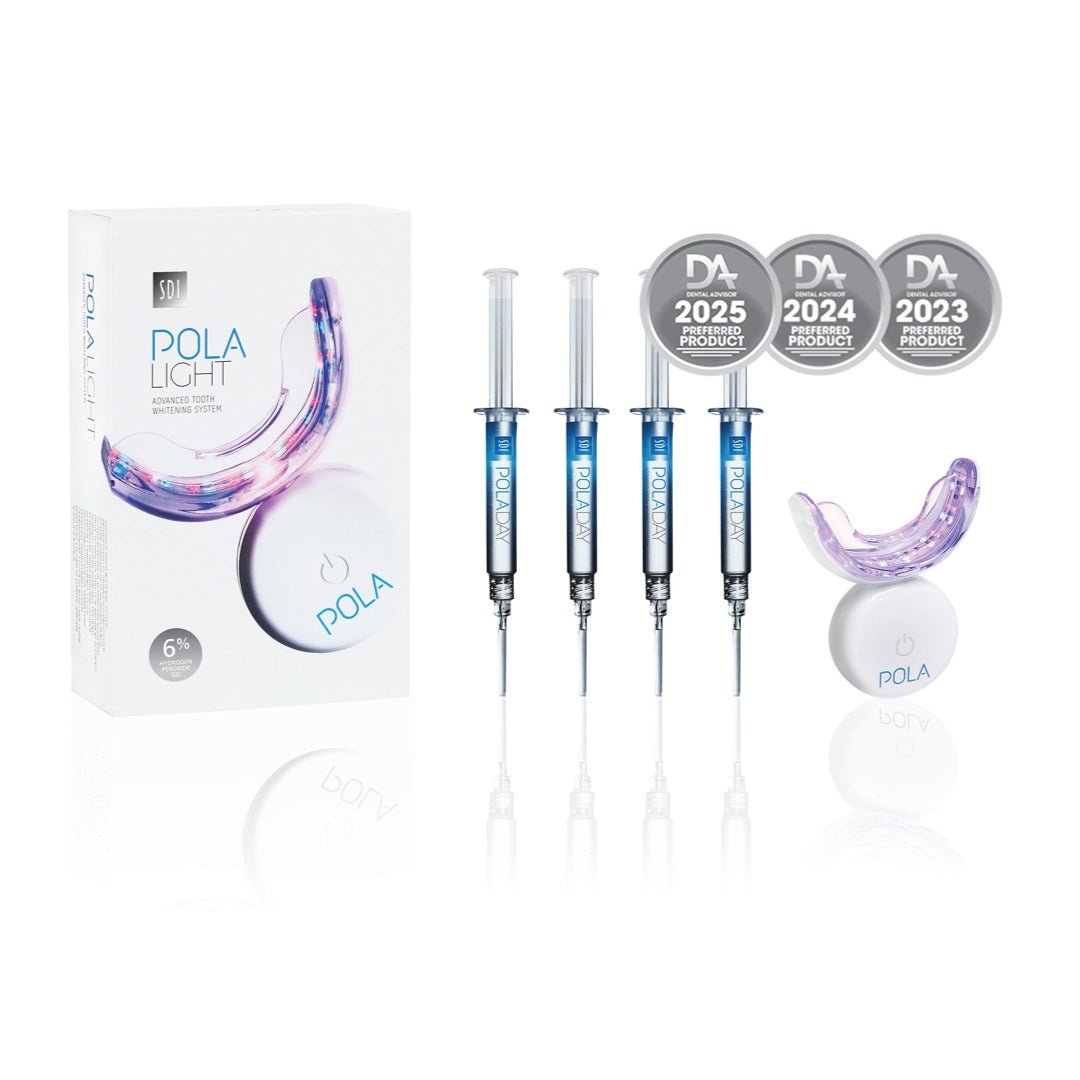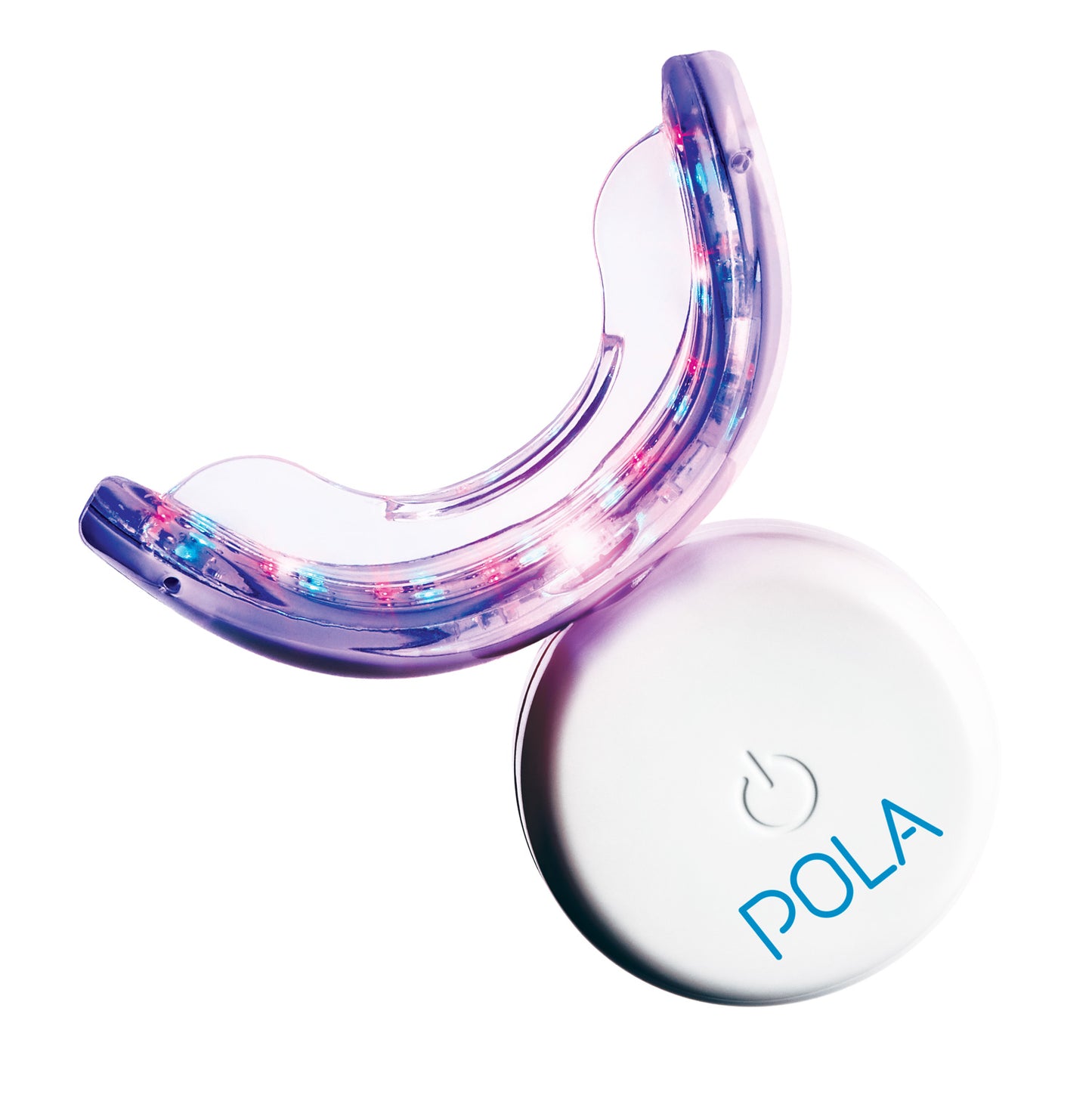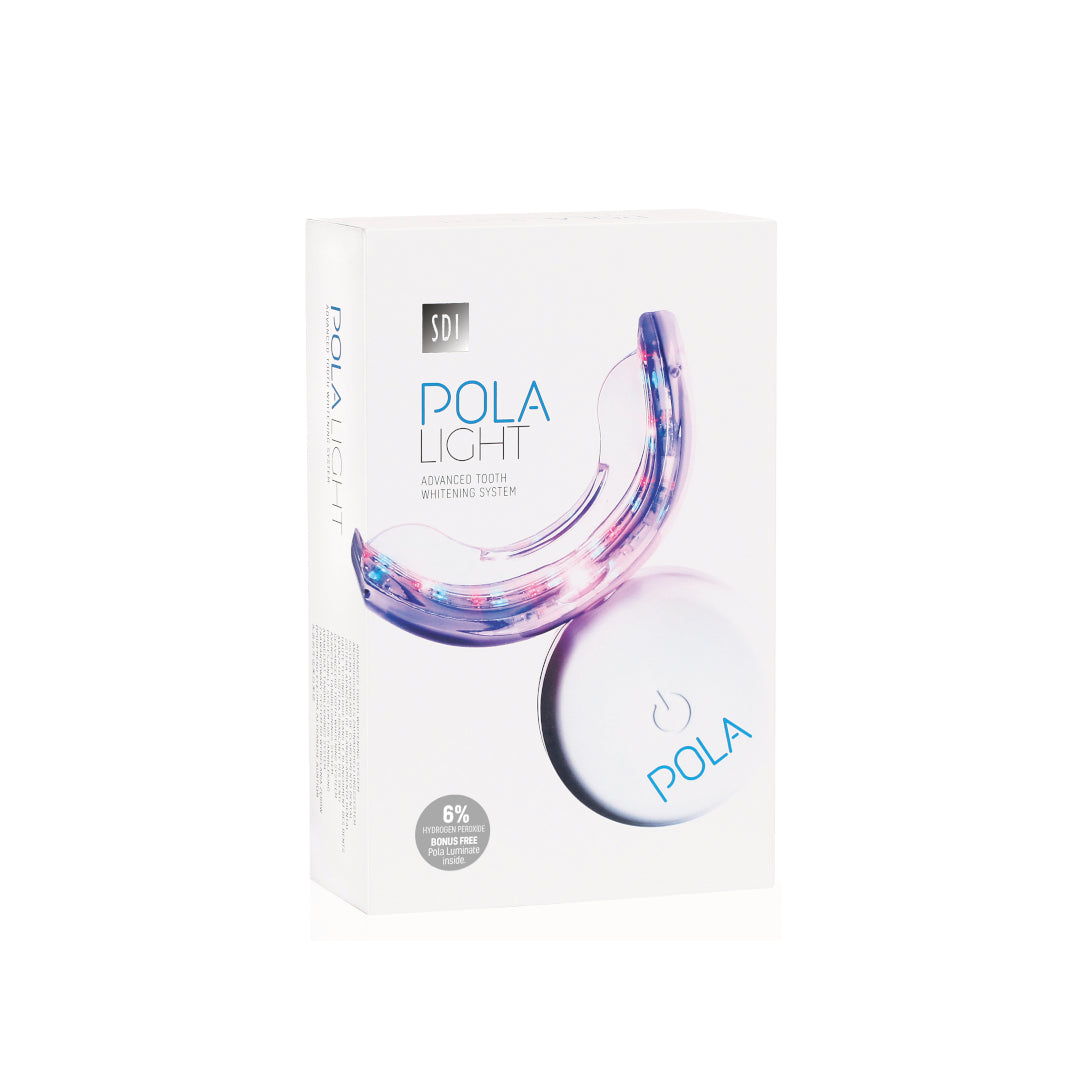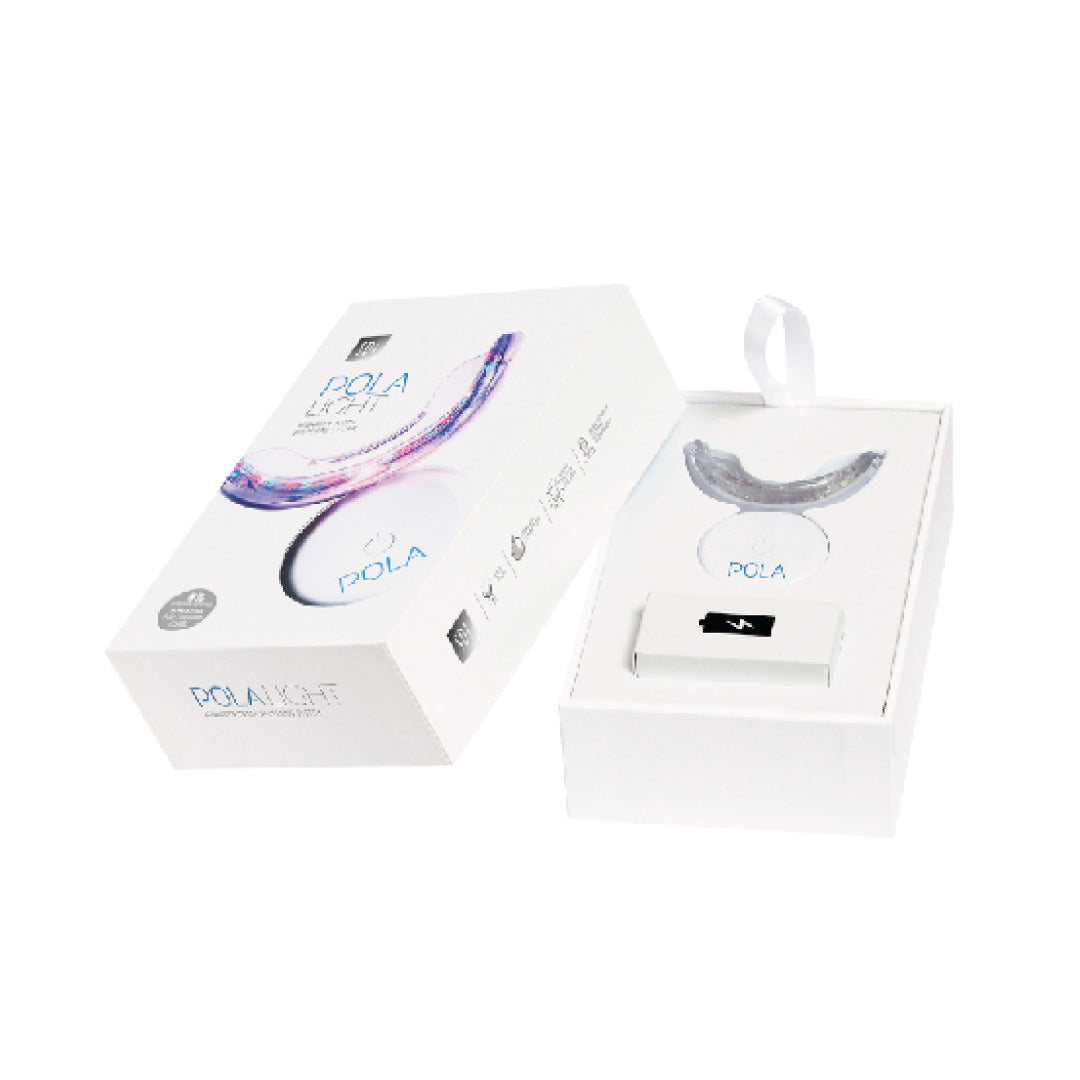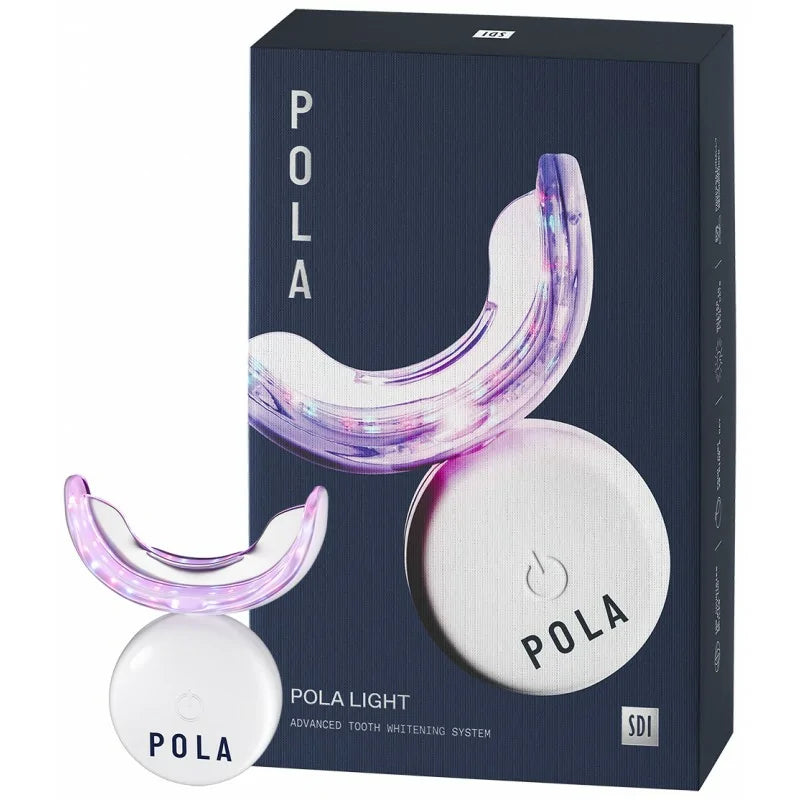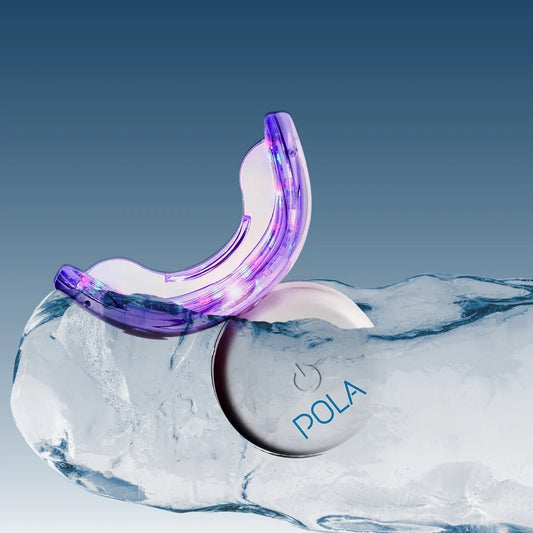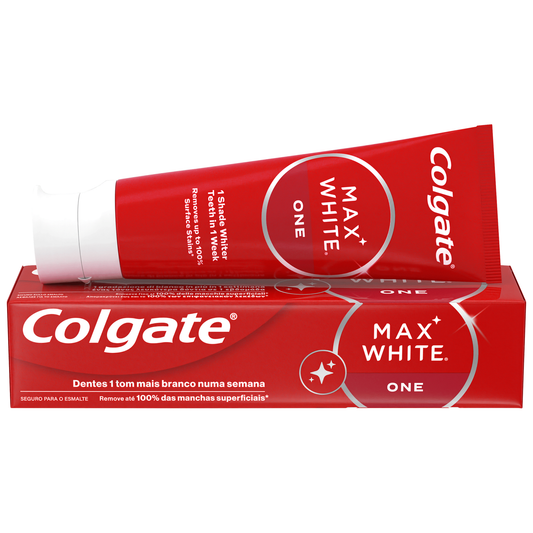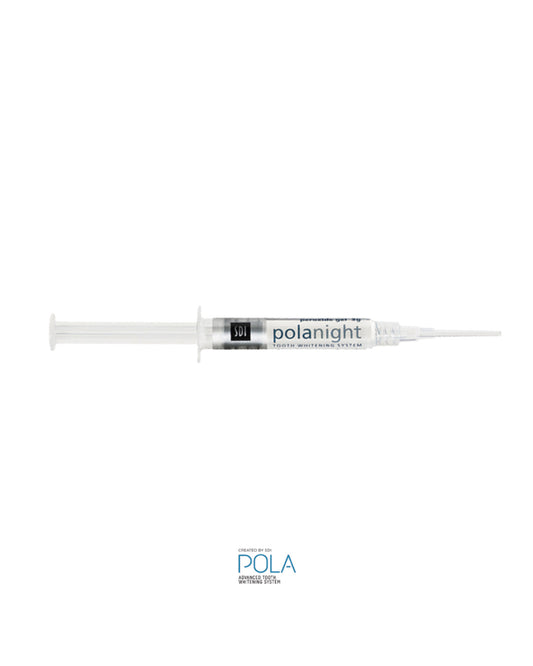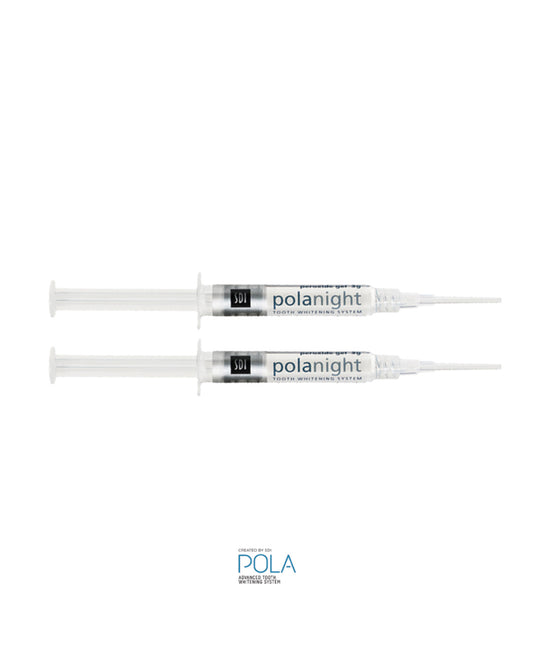Clear aligners and whitening: compatibility

Clear aligners have transformed aesthetic and functional dentistry, introducing the concept of invisible orthodontics and giving life to a new paradigm for those seeking a more elegant smile without resorting to traditional braces. These discreet, almost invisible devices have won over adults and young people who still want to straighten their teeth without changing their style. With the popularity of aligners, interest in compatible teeth whitening methods has also grown, thus raising important questions for those seeking to improve not only the alignment but also the color of their smile, taking advantage of the benefits offered by these technologies.
[The desire to whiten teeth in a short space of time is completely understandable. In response to this demand, the market has seen a proliferation of home whitening solutions, often promoted by digital influencers and celebrities. Among these options, one device has quickly become famous: the Pola Light . Presented as an innovative LED light whitening system, the Pola Light promises visible results in a comfortable and safe way, at home. But is this solution really compatible with the increasingly popular clear aligners?
What are clear aligners and how do they work?
Clear aligners are modern alternatives to metal braces. Made from durable thermoplastic materials and adapted to the anatomy of each patient, they are designed to gradually reposition the teeth. The patient receives several “sprays” or “trays”, which he or she uses according to the orthodontist’s recommendations. Periodic changes are necessary to monitor the tooth movement phase by phase.
Main advantages of clear aligners:
- Practically invisible, which makes it easier for adults to join
- Removable, allowing the user to take it off for eating and oral hygiene
- Reduction of discomfort typical of traditional brackets
- Fewer visits to the dentist for simple adjustments
This type of orthodontic correction requires discipline in daily use, with a minimum use of 20 to 22 hours per day being recommended.
Teeth whitening: the different techniques
Teeth whitening is usually divided into three main groups:
- Professional in-office whitening, usually using high concentrations of peroxide and light activation
- Outpatient whitening, supervised by a dentist, using gels provided for use at home with custom-made trays
- Over-the-counter home bleaching with lower concentrations of bleaching agent and without direct clinical supervision
In the domestic segment, LED light whitening kits, such as Pola Light, have emerged, attracting many users with their promise of quick results and simplicity.
Pola Light in detail
Pola Light is based on a system consisting of a tray for applying hydrogen peroxide gel and an LED light device that fits in the mouth, providing additional activation of the product. The idea is to make whitening more efficient, with daily sessions lasting a few minutes and visible results in just a few days.
According to the manufacturer, the system can be used safely at home, as long as the instructions are followed. The Pola Light system is different because it is marketed by oral health professionals, thus ensuring some control over the process.
Can Pola Light be used with clear aligners?
This is a common question for those who are undergoing correction with aligners and do not want to “wait” for the end of the treatment to obtain whiter teeth. However, the compatibility between LED whitening systems and aligners is not absolute and involves several clinical nuances.
The simultaneous use of whitening kits such as Pola Light and clear aligners raises the following questions:
- Aligner Material Aligners are made of polymers that have been specifically treated to withstand prolonged use in the mouth, but their reaction to highly concentrated whitening agents can vary. Direct contact with peroxide gels can cause microcracks, clouding of the material and even alter its flexibility.
- Gel Distribution The Pola Light design involves applying the gel to a tray designed for a comfortable, loose fit. Aligners are designed to fit tightly to the teeth, which can impede or hinder the circulation and even distribution of the whitening gel.
- Whitening effectiveness Whitening occurs when the gel comes into contact with the enamel. If the product gets trapped between the aligner and the teeth, the lack of adequate diffusion can compromise the results and increase the risk of gum irritation.
- Risk of hypersensitivity Combined use may become uncomfortable, increasing the risk of sensitivity and even gum abrasion if the gel leaks.
Practical recommendations for use
Manufacturers and experts generally advise:
- Remove the aligners to use Pola Light, using only the tray included in the kit.
- After each session, rinse your mouth thoroughly and clean your teeth before replacing the aligners.
- Never apply the whitening gel directly to the clear aligners.
- Seek personalized advice from your treating orthodontist, especially if you are considering invisible orthodontics options.
While it is technically possible to use whitening during aligner treatment, doing so simultaneously can compromise both the integrity of the aligners and the quality of the aesthetic result, especially when using an invisible appliance. For this reason, many dentists suggest postponing whitening until after treatment, or alternatively, using only safe solutions approved by your oral health professional.
| Situation | Professional consensus | Safe practice suggestion |
|---|---|---|
| Using Pola Light with aligners in place | Not recommended | Remove aligners before use |
| Apply whitening gel to the aligners | Contraindicated | Use only the molds in the kit |
| Whitening during orthodontics | Possible but with caution | Personalize individual approach |
| Consult an orthodontist | Highly recommended | Essential before starting |
Care to be taken during the bleaching period
Those who choose to undergo teeth whitening must take certain precautions during and after using the system to maximize the benefits:
- Avoid highly pigmented foods and drinks: coffee, red wine, dark teas, berries
- Do not smoke, as tobacco easily stains whitened teeth
- Maintaining strict oral hygiene, brushing after every meal and flossing is crucial to maintaining the results of teeth whitening.
- Reinforcing oral hydration to minimize sensitivity is one of the benefits of proper and supervised teeth whitening.
The success of whitening depends, in part, on the patient's cooperation.
The role of the dentist
Professional monitoring is essential, especially when used in conjunction with aligners or invisible braces. Only a dentist can assess the type of stains, the health of the enamel, the degree of sensitivity and any temporary contraindications to whitening, such as cavities or gum recession.
By talking to the dentist, the patient will be able to better define the most appropriate time for each intervention. Often, small orthodontic corrections leave less exposed areas or “new” teeth visible, so it makes more sense to finish with whitening, taking care of the entire tooth surface.
Alternatives within the same query
Some orthodontists and clinics offer customized whitening treatments immediately after the aligners are removed, using gels adapted to individual tolerance and sensitivity experienced during orthodontic treatment. These options maximize the uniformity of the result (the entire smile treated at the same time) and minimize risks.
Advantages of waiting for post-treatment:
- Allow for a complete assessment of the final smile
- Reduce the risk of sensitivities or adverse reactions during orthodontics
- Ensure color uniformity across all visible surfaces
What do users say?
On forums and social media, it is common to read reports from people who have tried using LED kits with or without aligners in place. Most people report greater satisfaction when using the whitening system alone, always removing the aligners, and when they adjust their expectations to the actual time that the procedure may require in a home environment.
The temptation to “rush” processes, combining the two therapies simultaneously, can result in loss of comfort and waste of material.
Individual factors that influence the decision
Every smile is unique: the response to whitening is influenced by age, enamel thickness, type of stains, diet and even genetics. It is important to clarify that no solution is guaranteed to the point of dispensing with clinical monitoring, especially for those who are investing in orthodontic treatment.
Open dialogue with professionals allows procedures and expectations to be adjusted, taking into account individual history and goals. Personalizing the treatment plan — for both alignment and whitening — is essential for a natural, healthy and harmonious smile.
What are invisible aligners?
The synergy between clear aligners and safe whitening methods paves the way for a healthier, more radiant smile. This advancement highlights the commitment to finding orthodontic and aesthetic solutions that work in harmony, promoting patient confidence and well-being.
In the era of aesthetic dentistry, it is vital to ensure that patients are aware that it is possible to achieve straight, white teeth without compromising their dental health. By harmonizing these two approaches, it is essential to ensure that the integrity of the aligners and the quality of the whitening are maintained, aiming for optimal and safe results.
Oral health professionals play a crucial role in providing personalized guidance, allowing each patient to reap the unique rewards of treatments tailored to their specific needs. This clinical guidance not only enhances outcomes, but also builds confidence in the process.
Ultimately, patient-professional collaboration is key to optimizing the orthodontic and aesthetic experience. Transparency about expectations and limitations will ensure that each step is taken safely, promoting smiles that not only shine, but also reflect the health and attention paid to every detail of the treatment.


